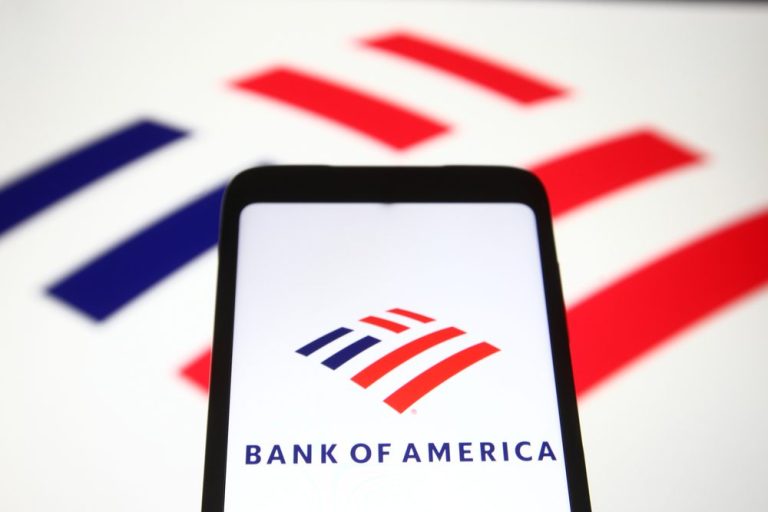Blockchain Missing Use Case at Scale Bank of America CEO Says

Bank of America CEO Brian Moynihan claims the company has “hundreds” of blockchain patents.
The issue in deploying the technology behind those patents? The all-important fact is that there exists little regulation in the crypto and blockchain space and that Bank of America says it sees even fewer use cases across its enterprise for the technology at scale — at least currently.
“The reality is that we run a payment business on our platform,” Moynihan said. “There are trillions of dollars a day and almost all of them are digital. If you think about blockchain, we have hundreds of patents on blockchain as a process and as a tool, and as a technology.”
In prepared remarks delivered before the U.S. House Committee on Financial Services, the Bank of America chief further clarified that “We [Bank of America] continue to evaluate applications of new technologies that have the potential to deliver value to our customer and clients, including distributed ledger technology (DLT) and blockchain. While Bank of America holds blockchain patents and has used DLT within existing products, we still have not found a use case at scale.”
Despite this, the banking CEO admits that blockchain applications within the payment space “work great.”
“We are exploring the use of this [blockchain] technology in multiple areas, including tokenizing internal client documents, Instant Cross Border Payments, bank accounts, and looking at ways to give workers quicker access to their earned funds,” he added.
As reported by PYMNTS, the financial services provider Visa is currently exploring ways to allow automatic recurring payments through the Ethereum blockchain.
Blockchain for Payments
Governments commonly perceive cryptocurrency as a payment for dubious purposes and not as its own complex economy on par with traditional financial systems — making it difficult for traditional financial institutions to find and leverage appropriately regulated integration synergies that may benefit their customers.
Despite its woes, the alternative digital asset class has been positioned as one day becoming the payment method of choice for many B2B customers. PYMNTS has reported extensively on how the marriage of blockchain innovation with established systems may be giving rise to a coming revolution in the payments industry.
Despite a rocky year overall for crypto, an impressive $8.2 trillion was transferred over just the Bitcoin blockchain alone in 2022 — according to crypto asset market and network data provider Coinmetrics. This averages out to over a quarter million dollars every second.
Near-instantaneous or real-time payments (RTP) across the blockchain cost businesses less to process than wiring funds and take significantly less time than waiting for more traditional payment methods, such as those using ACH, to come through.
As Gary A. Vecchiarelli, CPA, CFO at CleanSpark told PYMNTS in an earlier conversation, “It’s an extra step when paying with crypto, but the benefits outweigh that … The transit is without a doubt better than the current banking system.”
The Industry Isn’t Regulated Yet
Most long-term, sustainable, and successful businesses operate in standard-risk environments, buttressed by know-your-customer processes and long-standing controls. The crypto industry offers none of that.
According to research in the PYMNTS report, “Is Regulation Friend or Foe for Blockchain?” the European Union (EU) and the United States (U.S.) are currently taking the lead in blockchain regulation. In contrast, other countries, including China, have taken a more comprehensive and simpler step of banning it entirely.
Still, as cryptocurrency reaches a decade-plus of maturity, lawmakers are struggling to create regulations that balance limiting the technology’s risk while unlocking its benefits.
France’s market regulator wants to accelerate the mandatory licensing of cryptocurrency service providers. At the same time, the U.S. Office of the Comptroller of the Currency (OCC) has flagged crypto assets as a “special risk topic” for American banks — urging them to take a “careful and cautious approach to crypto activities and engagement with crypto-related firms.”
Given the fast-moving nature of digital asset technology, it’s proving difficult to find the line between supporting innovation while protecting customers and corporate organizations looking to enter the marketplace.
After all, the biggest failures plaguing the industry’s 2022 struggles centered around common check-the-box controls, including a lack of proper financial and accounting controls, and were generally exacerbated by day-one risk management omissions.
Maybe once the dust has settled and blockchain technology’s roadmap has been cleared, the as-of-yet use case at scale for crypto payments will reveal itself. Only time will tell.